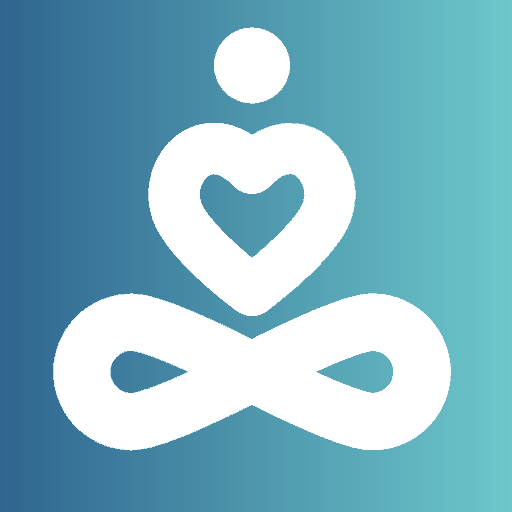Self-Harm
Emergency Resources
If you or someone you know is currently experiencing suicidal thoughts and need help, please reach out to one of the following resources:
988 Suicide & Crisis Lifeline - Call. Text. Chat. (988lifeline.org) National 24-Hour Crisis Line
SafeUT | Crisis Chat and Tip Line
Text CONNECT to 741741 | FREE Help for Depression | Crisis Text Line
- BIPOC Text “STEVE” to 741-741
- En Espanol, Envia un mensaje de texto con la palabra AYUDA al 741-741
24/7 Suicide Hotline for LGBTQ Youth - We’re here for you Now (thetrevorproject.org) (LGBT+ Text “START” to 678-678 or call 1-866-488-7386)
Veteran's Crisis Line (Veterans text 838-255, or call 988, then press 1) - You do not need to be enrolled in VA benefits to connect.
Understanding and Addressing Self-harm
Self-harm refers to injuring oneself without the intent to end one’s life. It is sometimes referred to as non-suicidal self-injury (NSSI). Examples of self-harm include cutting, burning, bruising, scratching, hair pulling, interfering with wound healing, and other forms of self-inflicted bodily harm.
Self-harm is a complex issue that affects individuals from all backgrounds and identities. Certain groups including adolescents; LGBTQ+ individuals; trauma survivors; sexual assault survivors; and individuals with mental health conditions, including borderline personality disorder, anxiety, depression, bipolar disorder, eating disorders, and alcohol or substance misuse, may be at a higher risk.
There are often many reasons behind self-harm. For some individuals, it can be a way to cope with intense emotional distress and provide temporary relief from that distress. Others may use it as an attempt to feel something, punish themselves, or gain control. While the behavior may provide temporary relief, it can later elicit or amplify feelings of guilt or shame and increase the emotions it seeks to release. Additionally, self-harm can unintentionally result in, or contribute to, life-threatening health concerns. Self-harm can become an unhealthy coping mechanism that can be difficult to stop without support.
Recognizing Potential Warning Signs
Recognizing warning signs of self-harm is crucial and can include:
- Unexplained injuries, bruises, bite marks, or burns
- Scars (sometimes in patterns)
- Frequent bandaged wounds or attempts to cover specific body parts, including wearing long sleeves and long pants even in hot weather
- Blood stains on clothing or tissues
- Sharp objects or other items used for self-injury going missing
- Keeping sharp objects or other items used for self-injury available in unusual situations or locations
- Reports of accidental injury
- Withdrawal, changes in behavior or appearance, or lack of interest in previous activities
- Isolation and disconnection from support systems
- Frequent thoughts of helplessness, hopelessness, or worthlessness
If you notice these signs in a friend or loved one, approach them with compassion. Begin by asking open-ended questions to express concern and understand how they may be struggling. Encourage them to seek support from professionals, counselors, family, friends, or trusted support systems.
Can Self-harm be Prevented?
While not every instance can be prevented, certain protective factors can reduce risks:
- Encourage healthy coping strategies and emotional regulation skills.
- Foster strong social connections and support systems like friends, family, teachers, religious communities, and coaches.
- Increase access to professional counselors and quality mental health services.
- Promote positive norms around talking about mental health and emotional needs.
- Help educate the role that media and social media plays in influencing, and potentially promoting, these behaviors.
Early intervention when risk factors emerge or warning signs appear is essential, but can also happen at first signs of emotional distress before self-harm occurs. Supporting those struggling through compassionate listening, resource referrals, and nonjudgement is vital. Remind them that they are not alone. Recovery is possible with proper treatment and support systems.
What should I do if someone I know self-harms?
Listen and express care:
Provide judgment-free listening for them to share their story. Convey that you care and want the best for them.
Encourage them to seek professional help:
Self-harm can indicate serious emotional distress or mental health issues. Urge them to seek counseling or therapy if they haven’t already. Offer to help connect them with resources.
Identify support systems:
Discuss their existing social support system and additional support for their recovery, like friends, family members, teachers, coaches, counselors, and religious leaders. Help activate those support systems while respecting the individual’s wishes regarding whom they feel comfortable involving.
Reduce access to means:
Create a safety plan, including limiting their access to objects often used for self-injury. This can include securely storing or removing objects for periods of time. Get support from guardians or caregivers if the individual is a minor.
Practice your own self-care:
Supporting another can be emotionally challenging. Ensure you also prioritize your mental health through self-care activities. Seek counseling yourself if needed.
Contact Crisis Hotlines:
If you need assistance or guidance, consider calling a 24-hour crisis hotline. Call or text 988 or one of the crisis numbers listed above. Trained professionals are available to provide guidance and support.
Immediate Danger:
If you believe the person is in immediate danger, do not hesitate to call 911 or take them to the nearest emergency room. Safety is the top priority in such situations.
Building Resilience and Coping Strategies
Developing resilience and adopting healthy coping strategies is crucial for individuals at risk of self-harm. Here are some options:
- Mindfulness and relaxation techniques: Mindfulness, deep breathing exercises, or progressive muscle relaxation can help manage stress and regulate emotions.
- Outlets for expression: Find and engage in ways to express emotions, such as art, journaling, music, or physical activities such as sports or exercise.
- Establish routine: Having a daily routine can give structure and stability to help manage stress and decrease overwhelming emotions.
- Connect with others: Building and maintaining meaningful connections with family, friends, or other support groups can be a powerful protective factor and an area to express thoughts and emotions while receiving support.
- Seek professional help: Self-harm is often a signal of underlying mental health conditions. Assistance from a mental health professional can help an individual understand their unique stressors and develop healthy coping tools.
- Build a safety plan: Having a safety plan can help individuals understand their unique triggers that activate thoughts of self-harm and give internal tools, support systems, and resources for these thoughts.
Building resilience is a gradual process, and individuals may need ongoing support.
Resources
- Crisis Text Line Help for Self-harm 741741
- The Trevor Project Support for Self-Harm Recovery
- Cornell University Self-Injury & Recovery Resources
- S.A.F.E. Alternatives Video Resources for Self-Injury
- Mayo Clinic Self-injury/cutting
- Therapy Assitance Online (TAO)



